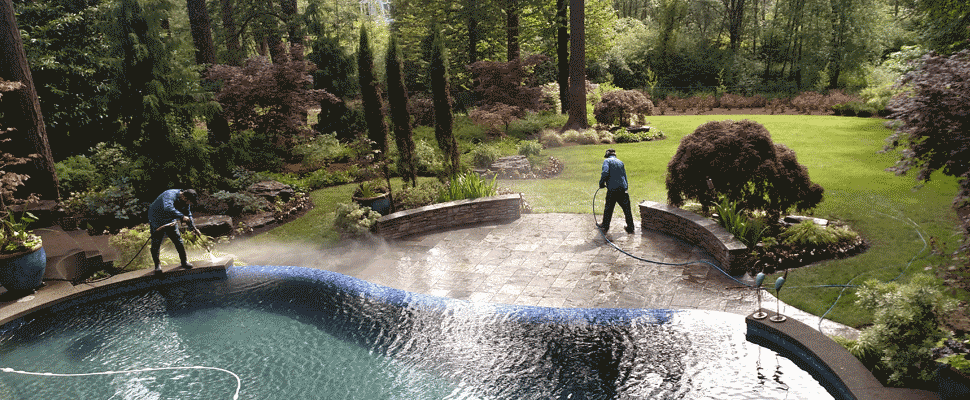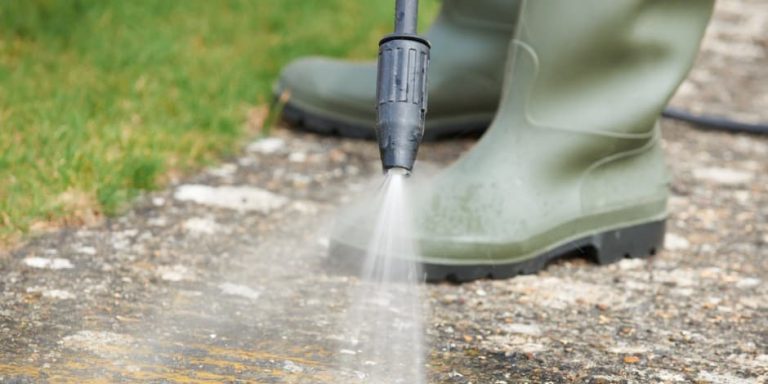
When most people think about the environmental impact of power washing, their minds jump to chemical runoff or water waste. But there’s a subtler, often overlooked consequence: disruption of natural water flow patterns in landscaped areas. 🏡💦
Power washing equipment produces intense, focused streams of water that, over time, can alter soil structure, compact plant beds, and redirect surface water in ways that weren’t originally intended. These changes can have long-lasting effects on drainage, erosion, plant health, and even nearby ecosystems.
💧 How Power Washing Changes Water Flow
Power washing often occurs on:
- Sidewalks
- Patios
- Driveways
- Home siding and roofs
While these surfaces are designed to drain water efficiently, excessive or repeated power washing sends large volumes of high-velocity water into surrounding landscaping. This can:
- Erode mulch and topsoil
- Create gullies or channels in plant beds
- Flood low-lying areas
- Redirect runoff into unintended zones
Over time, the landscape’s natural hydrology is altered, reducing its ability to manage stormwater sustainably.
Browse Amazon Here For Eco-Friendly Pressure Washing Detergents
🧱 Compaction and Soil Disruption
High-pressure water jets can compact loose soil, especially in garden beds or near shrubs. Compacted soil:
- Reduces water infiltration
- Prevents oxygen from reaching plant roots
- Increases surface runoff instead of absorption
This effect worsens over time if power washing is done frequently without accounting for soil recovery.
🌱 Damage to Native Drainage Zones
In many residential landscapes, native swales, bioswales, or rain gardens are used to manage water naturally. But when these areas are repeatedly hit with high volumes of water from power washing, they can become:
- Overloaded with silt or debris
- Stripped of mulch and vegetation
- Altered in slope, preventing proper function
These systems are delicate, and even small changes to flow direction or volume can make them less effective.
🧪 Case Study: A Suburban Lawn Gone Wrong
A homeowner in the Pacific Northwest power washed their patio and driveway once per month. Over time, the slope of their lawn shifted as soil eroded and compacted in key spots. The result?
- Stormwater began to pool near their home’s foundation
- Native plants in the rain garden struggled and eventually died
- The homeowner had to pay over $5,000 for regrading and drainage correction 🌧️💸
🌊 Impact on Nearby Ecosystems
Redirecting flow from a power washing job into storm drains or toward natural areas can:
- Introduce silt and debris into nearby creeks
- Drown native plants in saturated zones
- Erode banks or slopes
- Cause unintentional pollution hotspots at runoff collection points
Even though power washing jobs are usually short-lived, their cumulative effects over time can reshape how a landscape functions—and not for the better.
✅ Best Practices for Flow Management
- Map drainage before starting any job
- Use containment berms or mats to control runoff direction
- Avoid aiming high-pressure water at loose soil or mulched areas
- Consider using a lower pressure setting near landscaping
- Periodically inspect and re-mulch areas to restore lost soil
🌍 Final Thoughts
Water always finds a way—but power washing can change where that way leads. With a little planning and responsible practice, professionals and homeowners can keep landscapes clean without damaging the natural flow that keeps them thriving. 🌧️🌱💚
Browse Amazon Here For Popular Pressure Washers And Accessories






